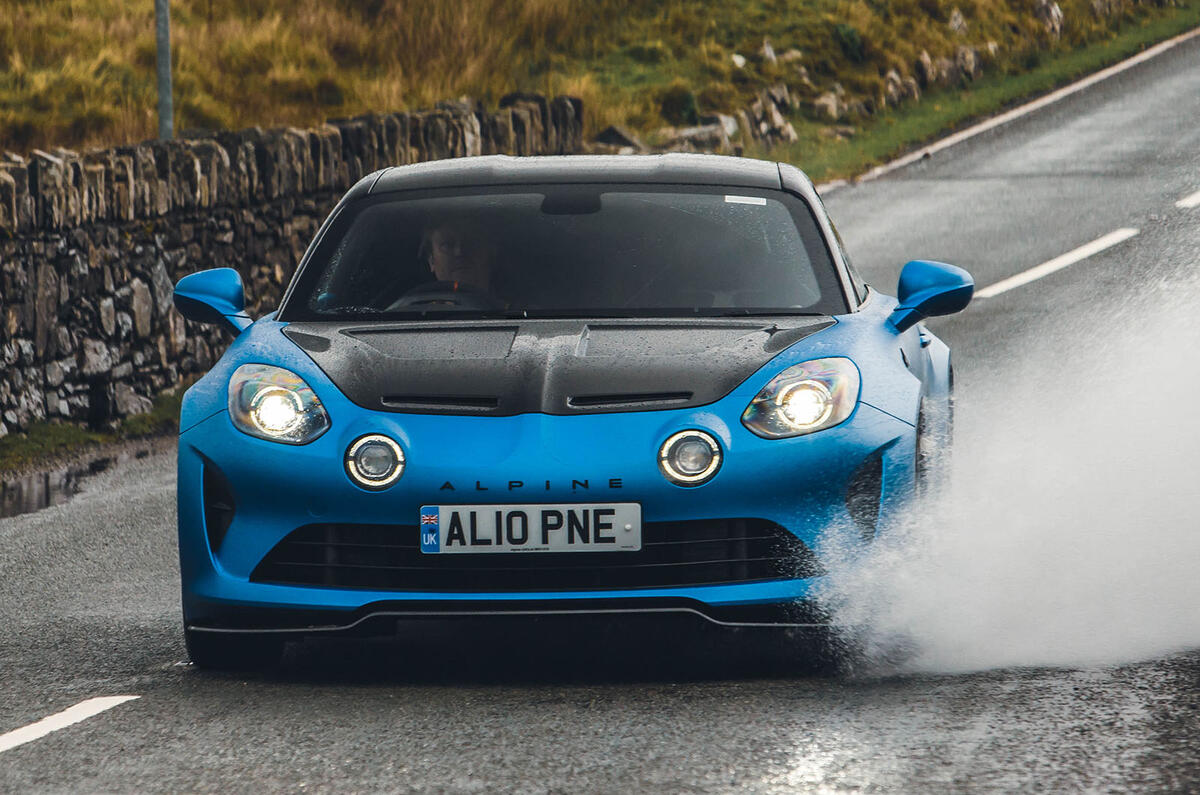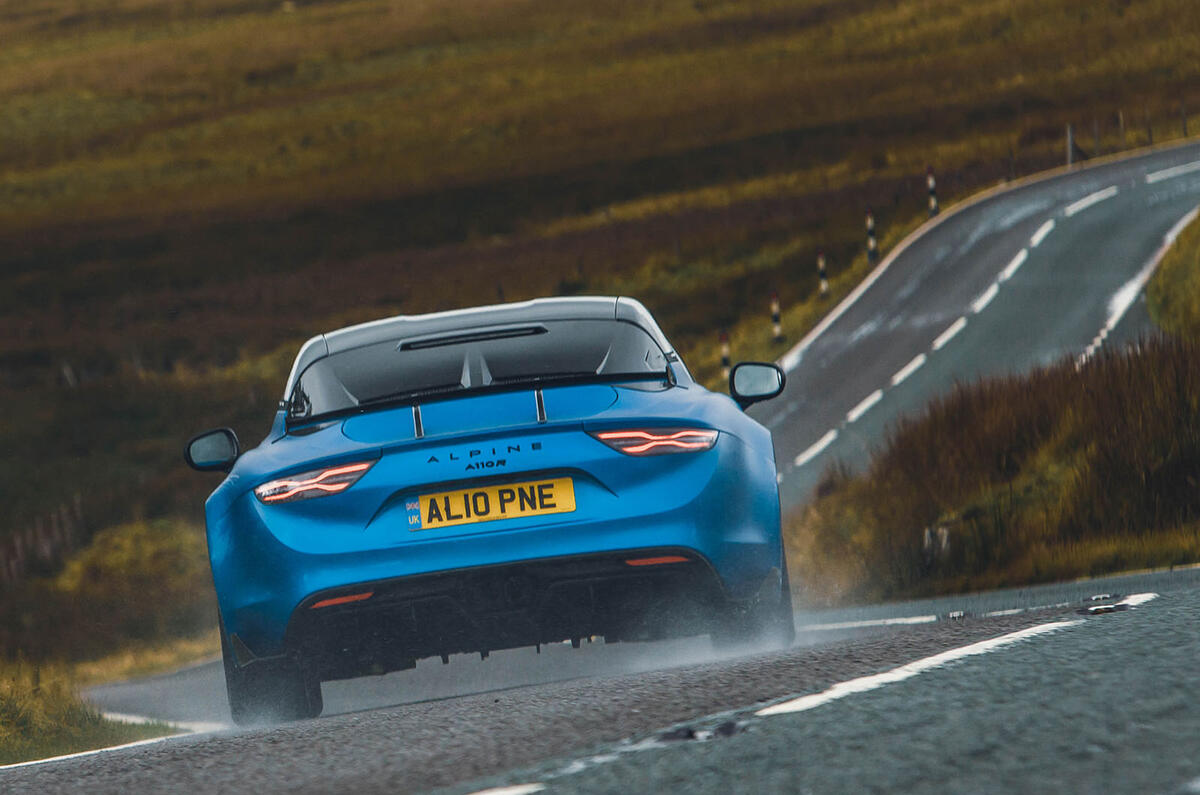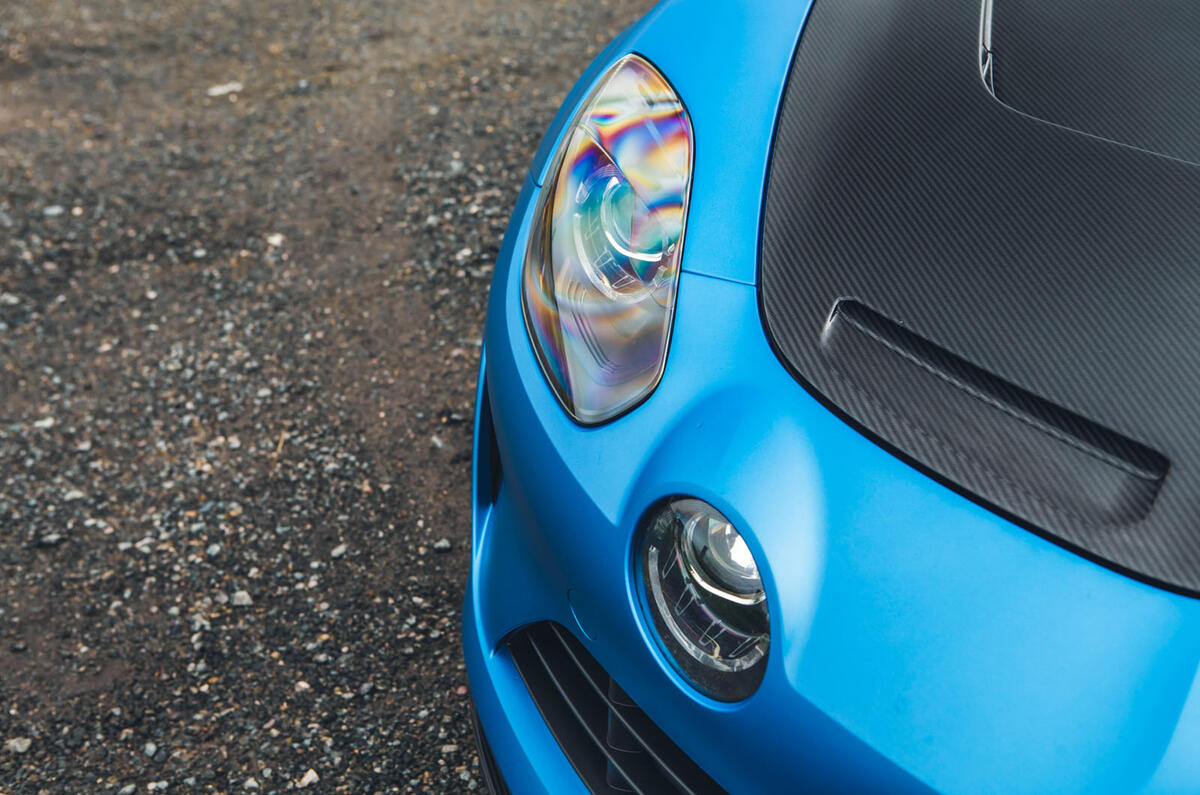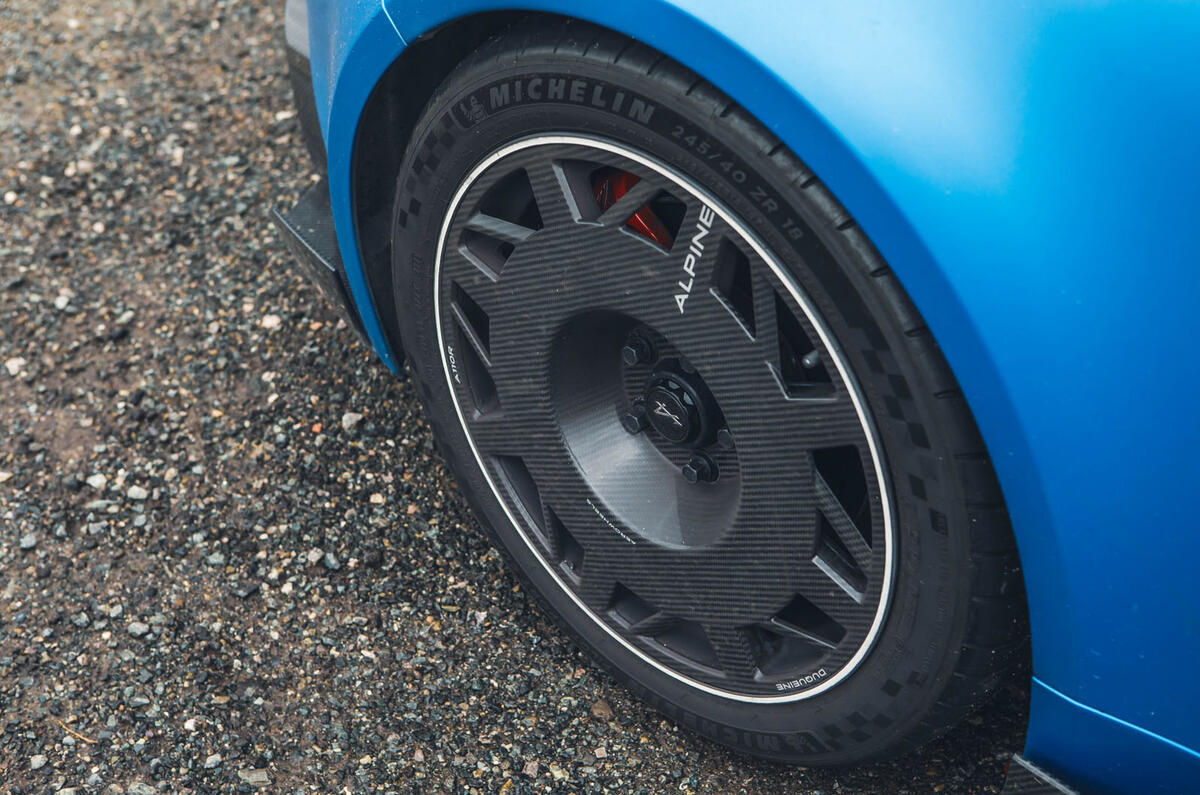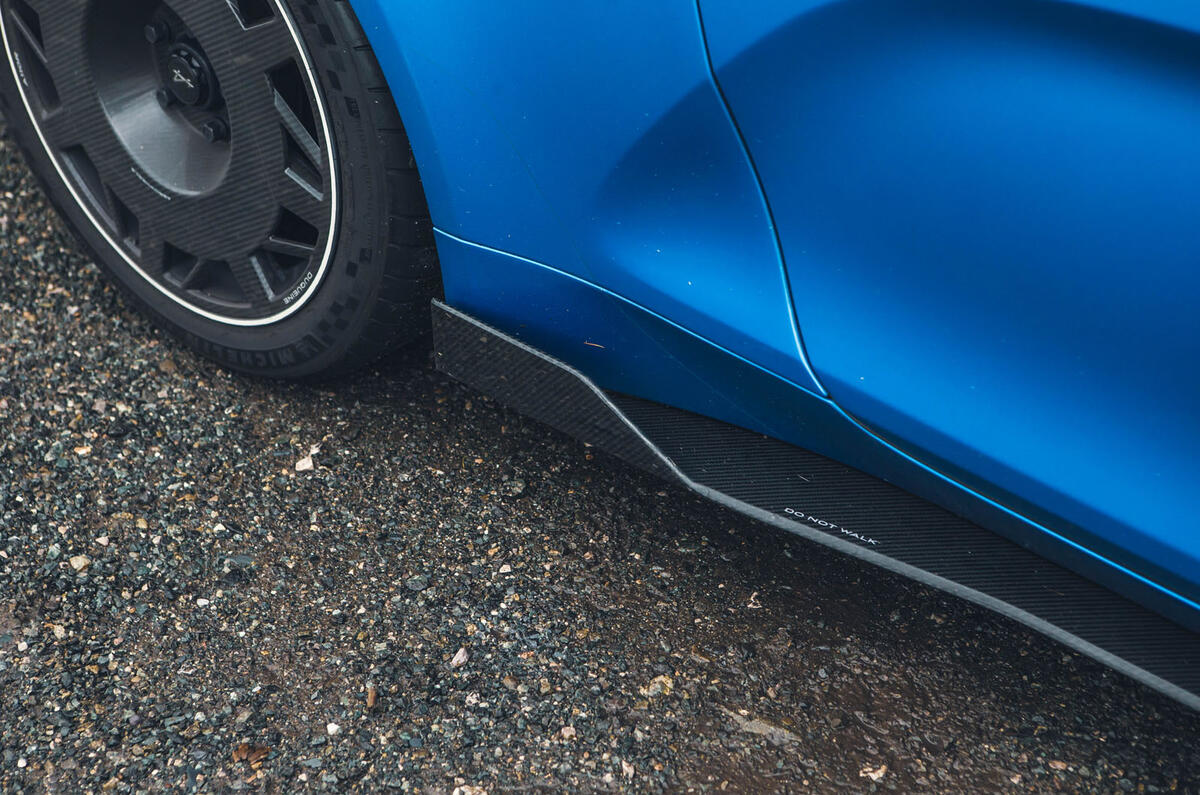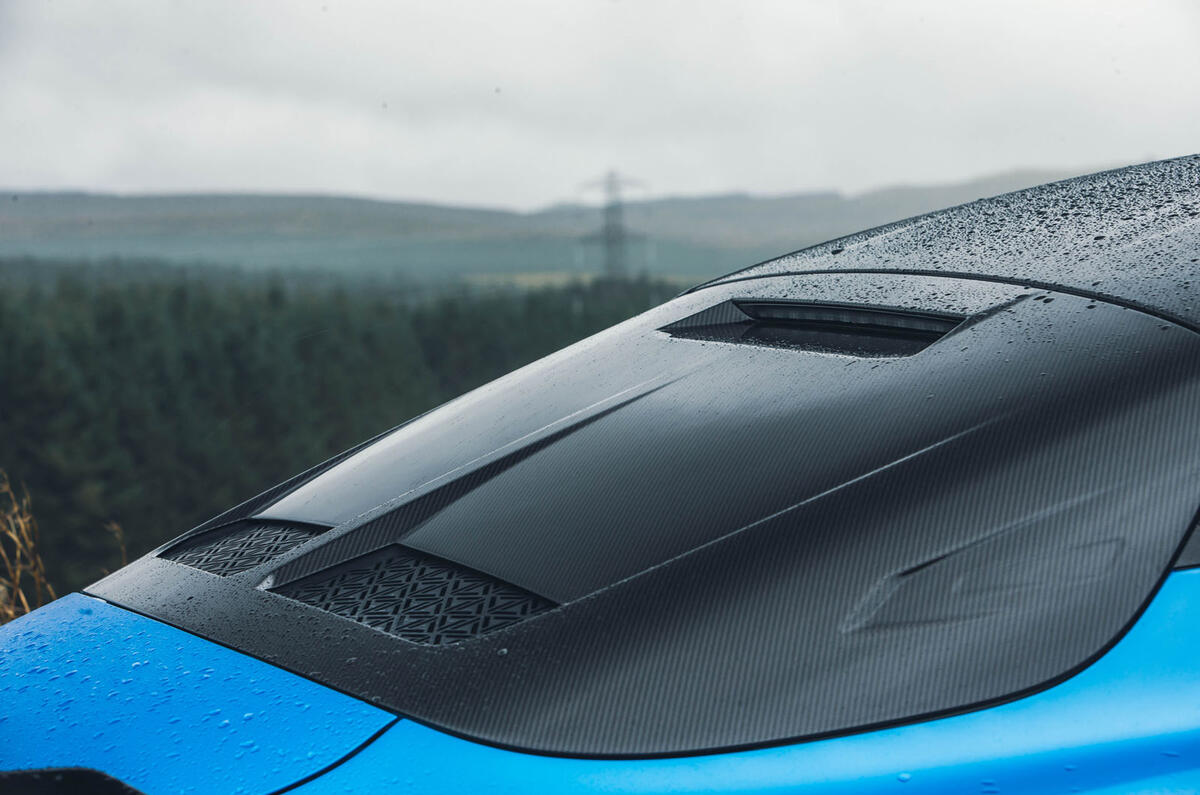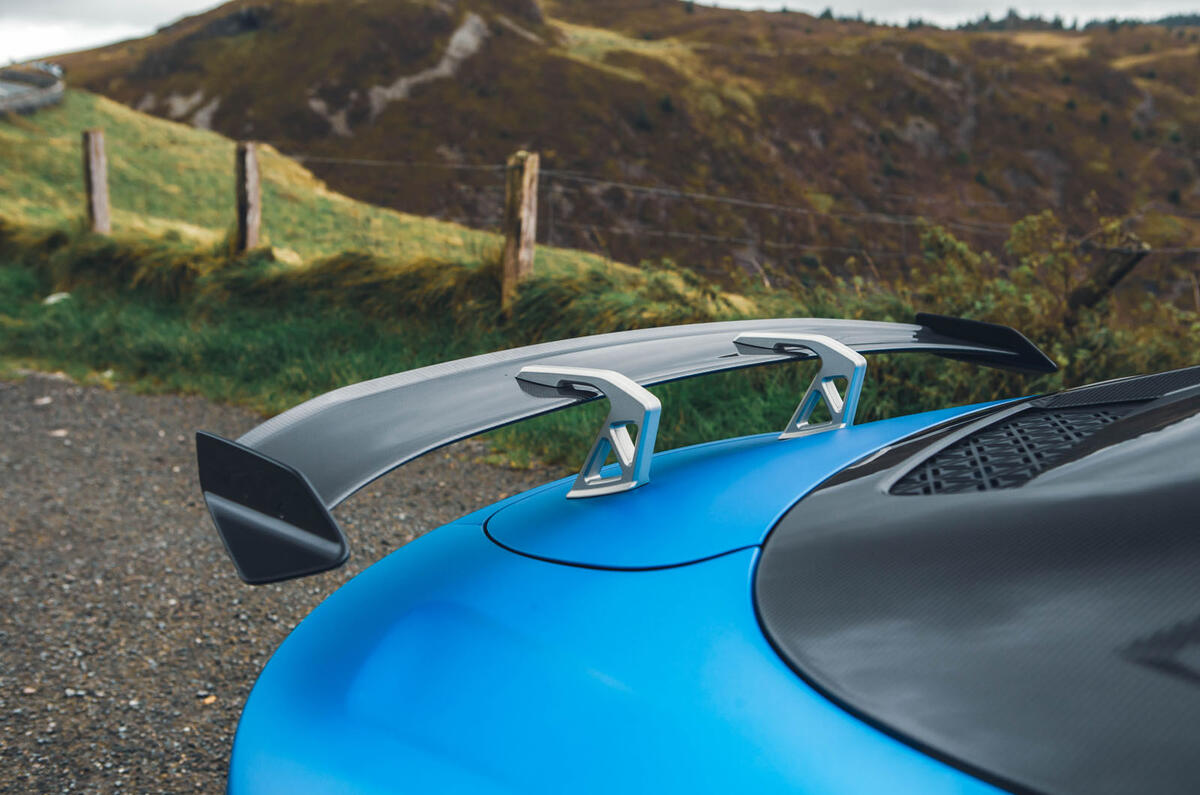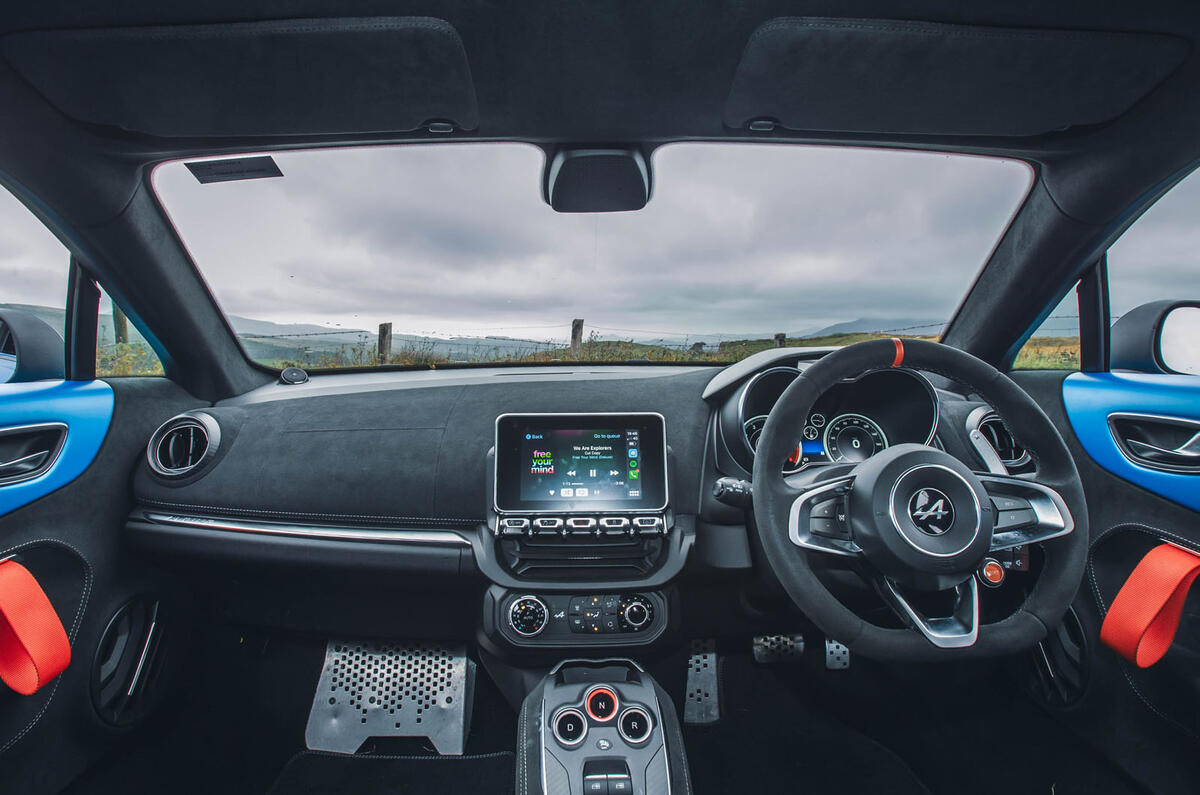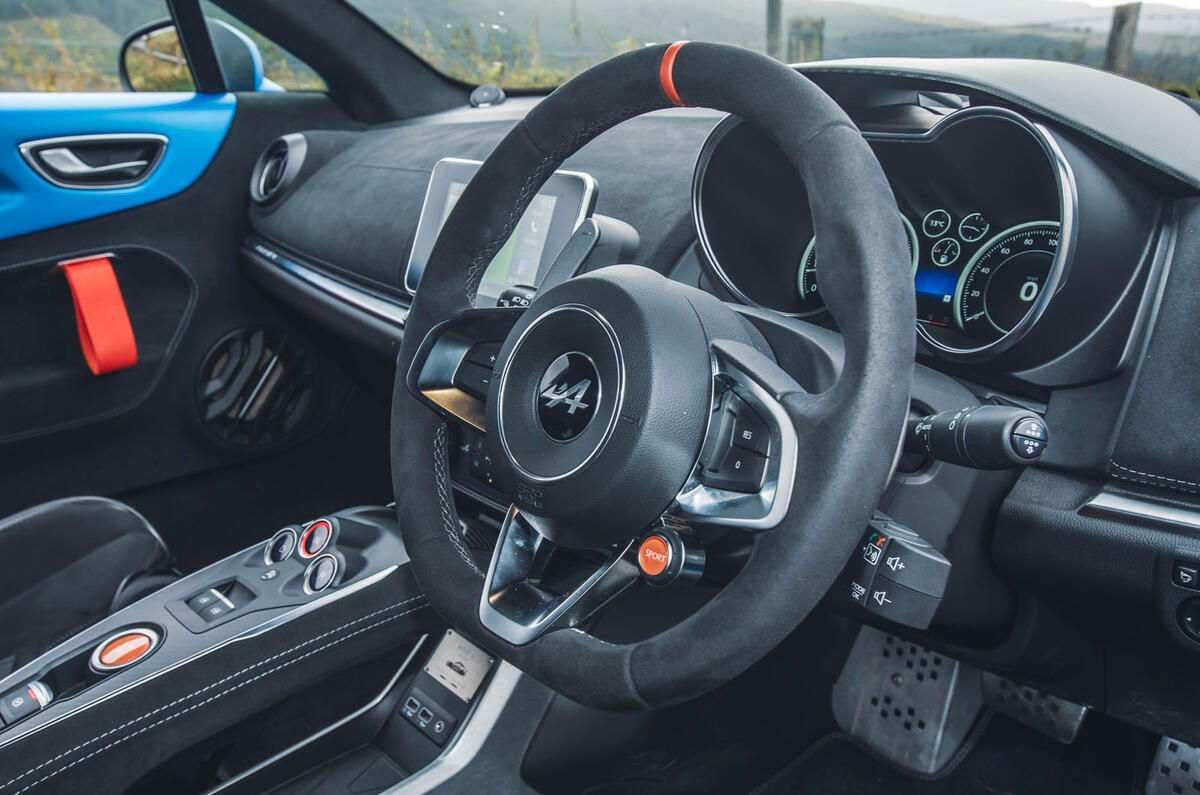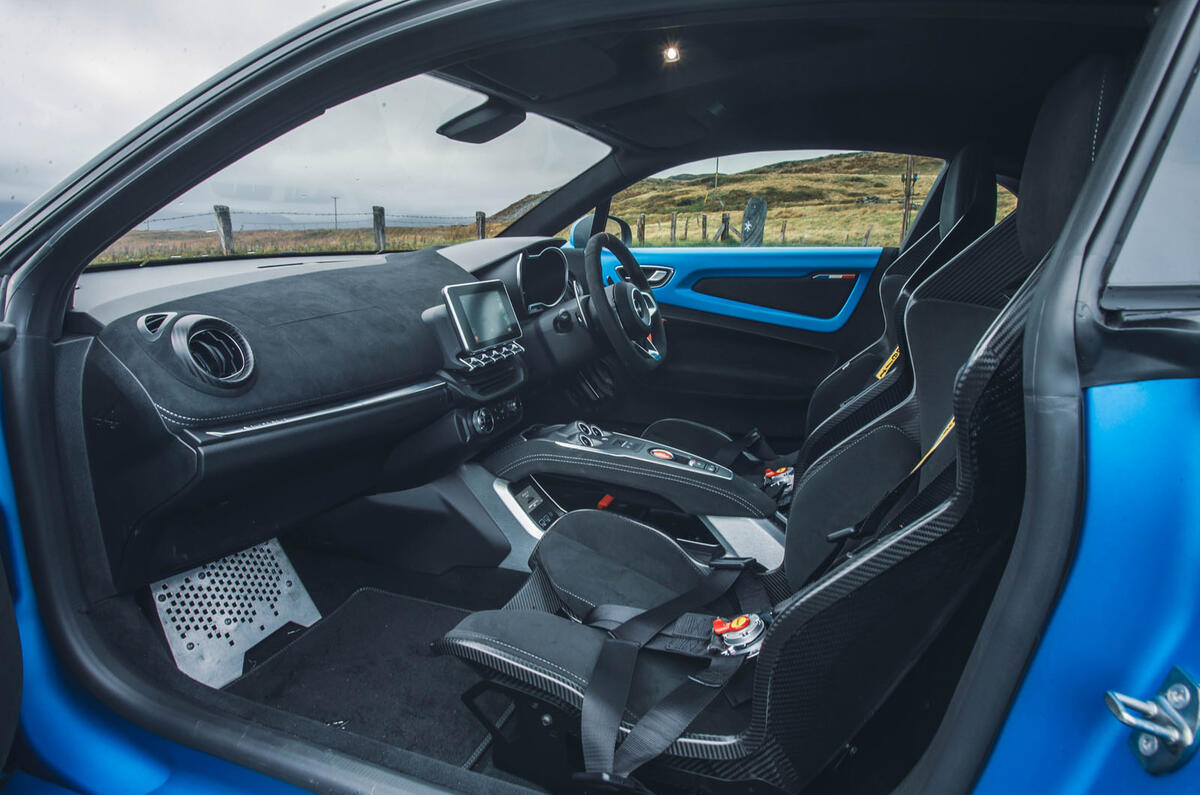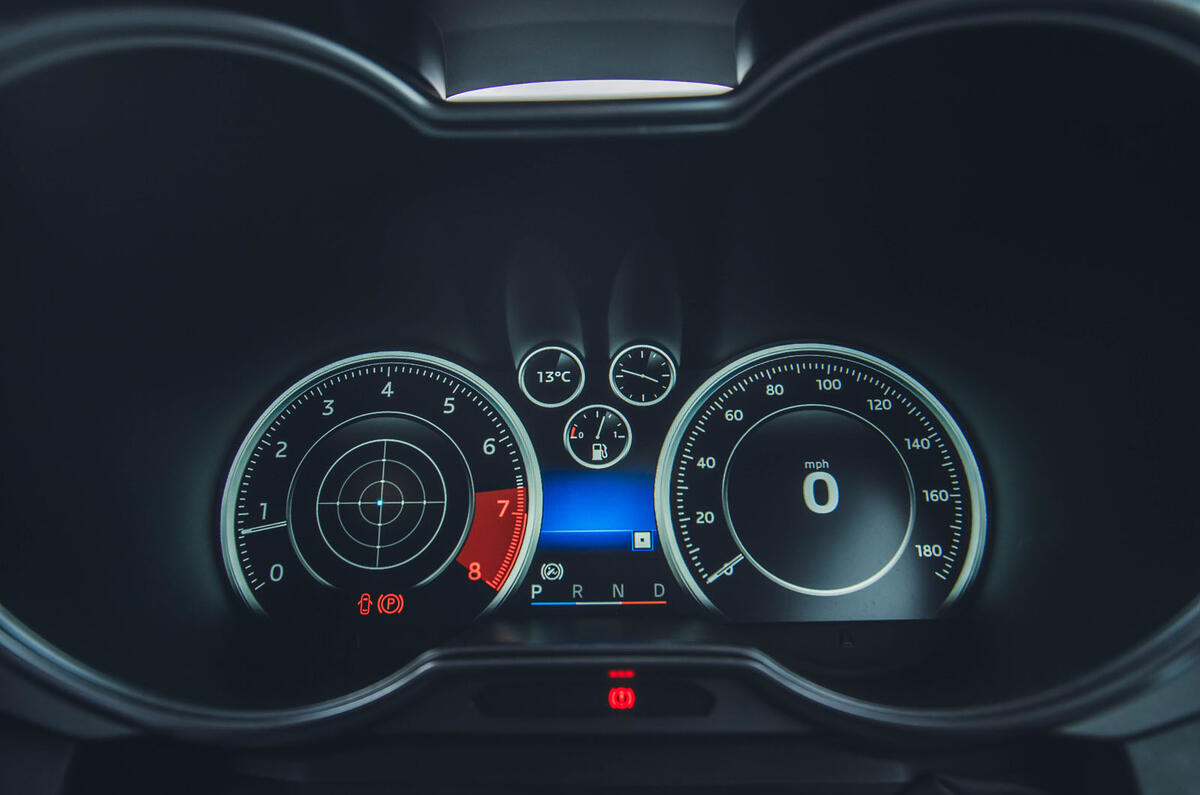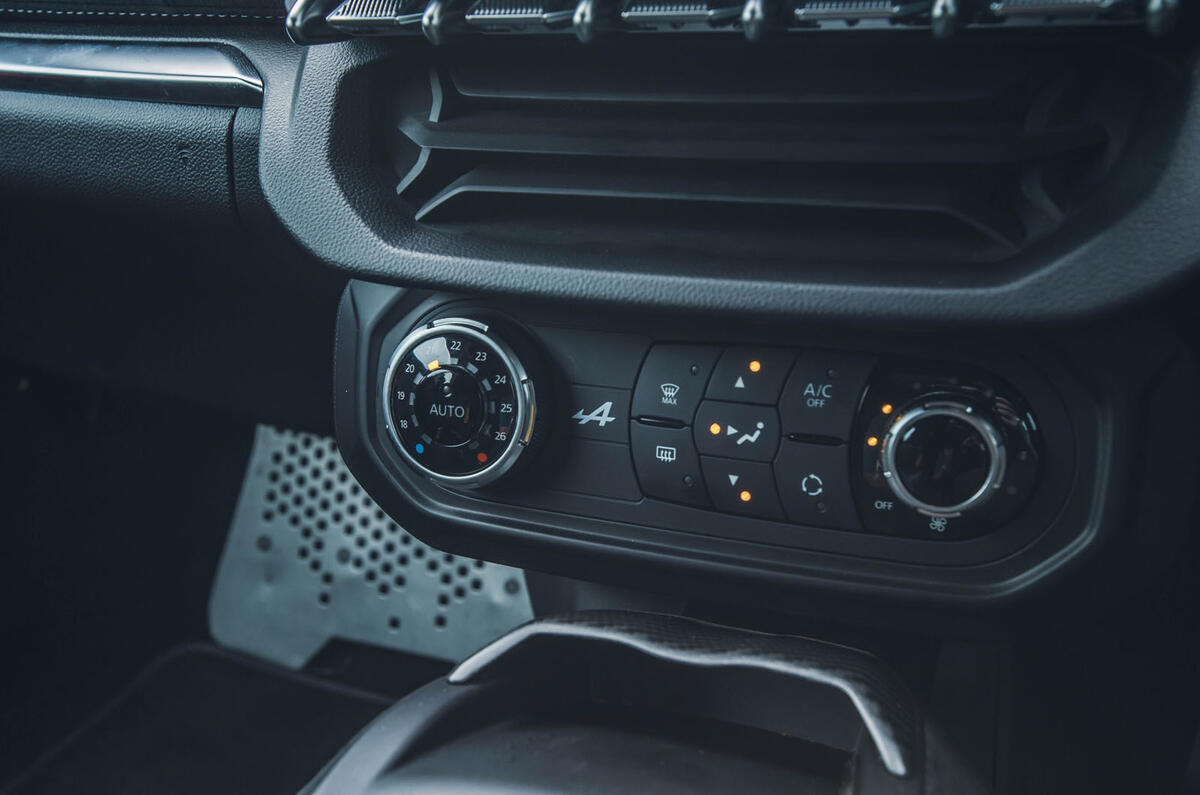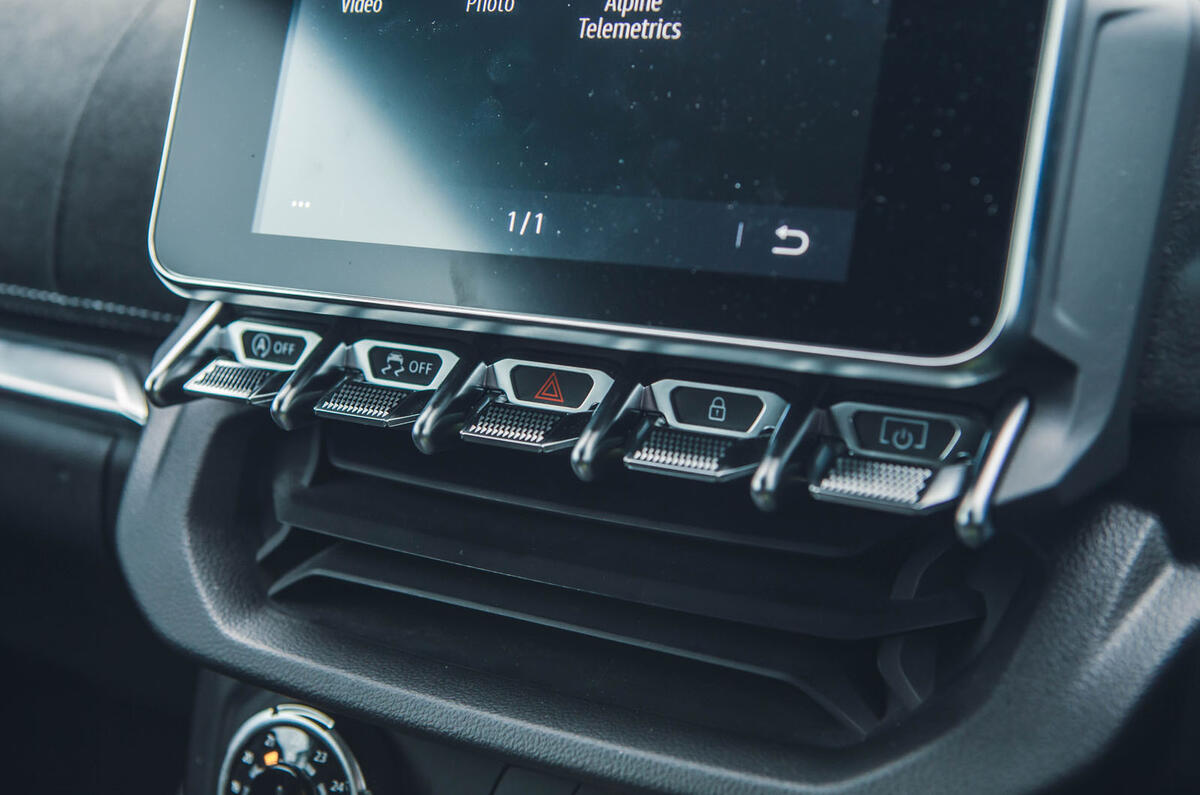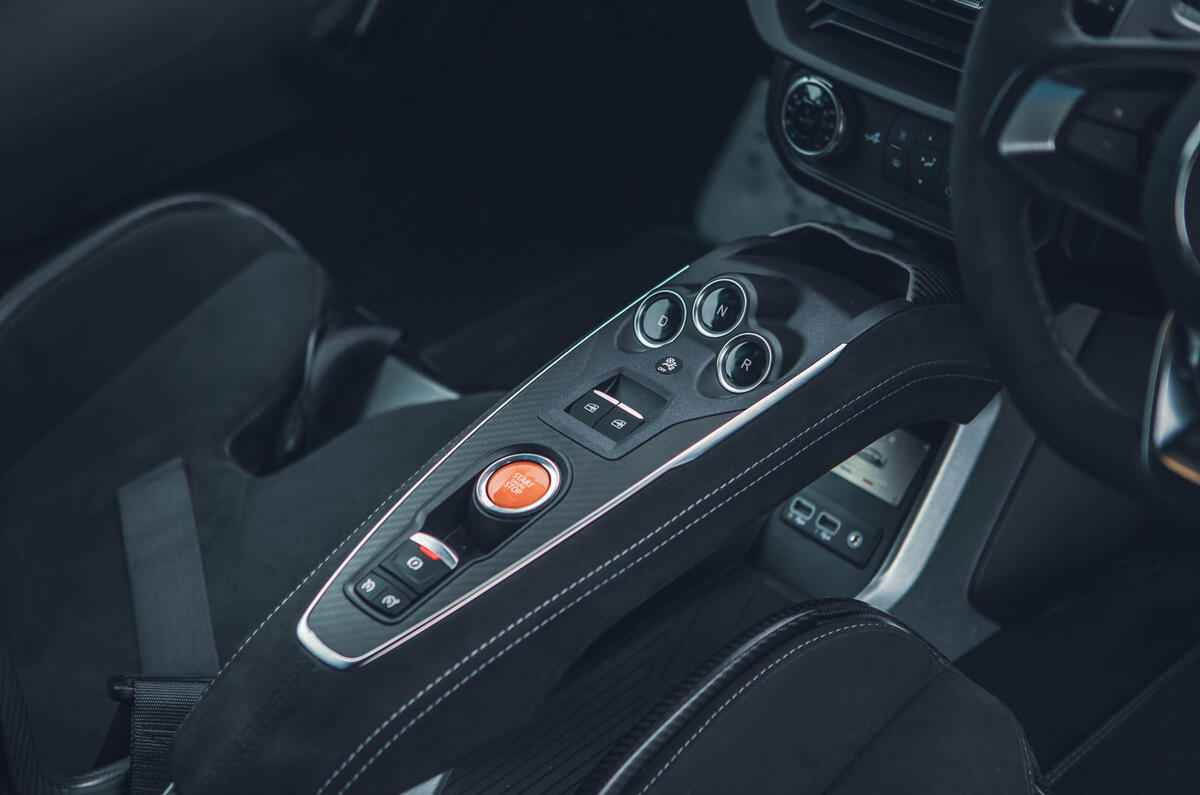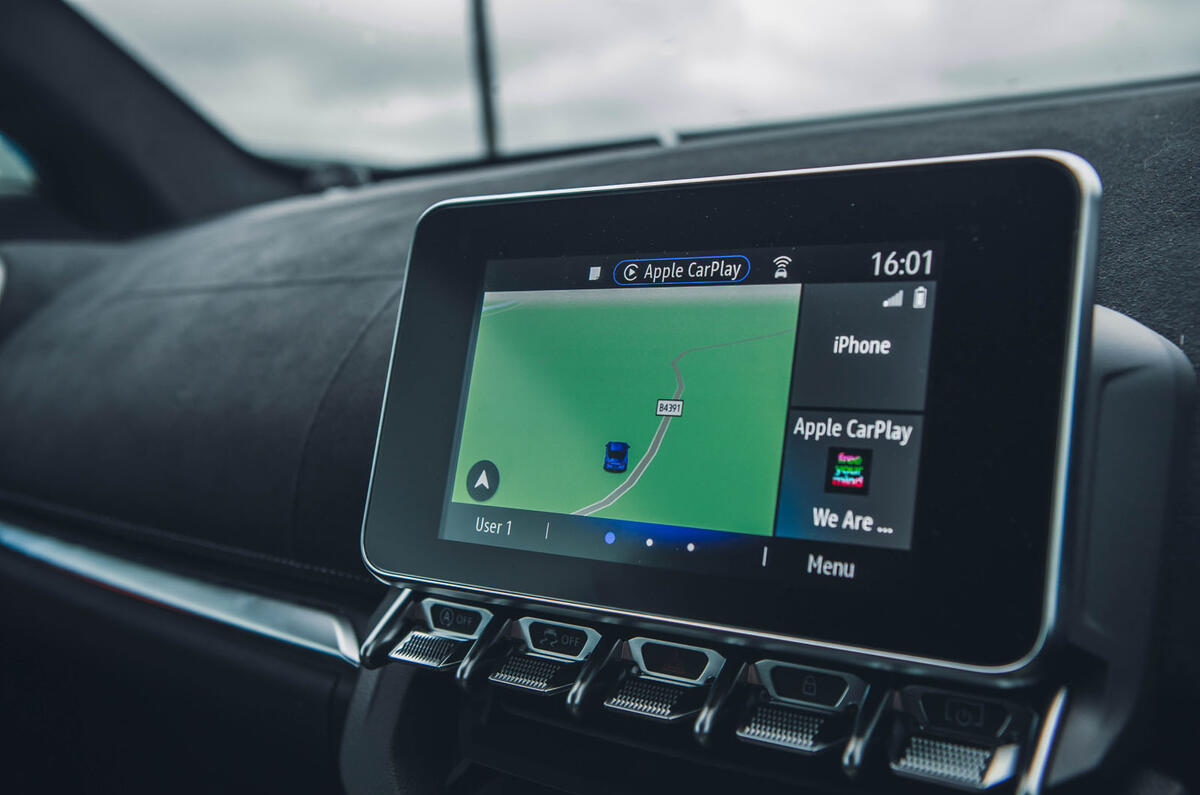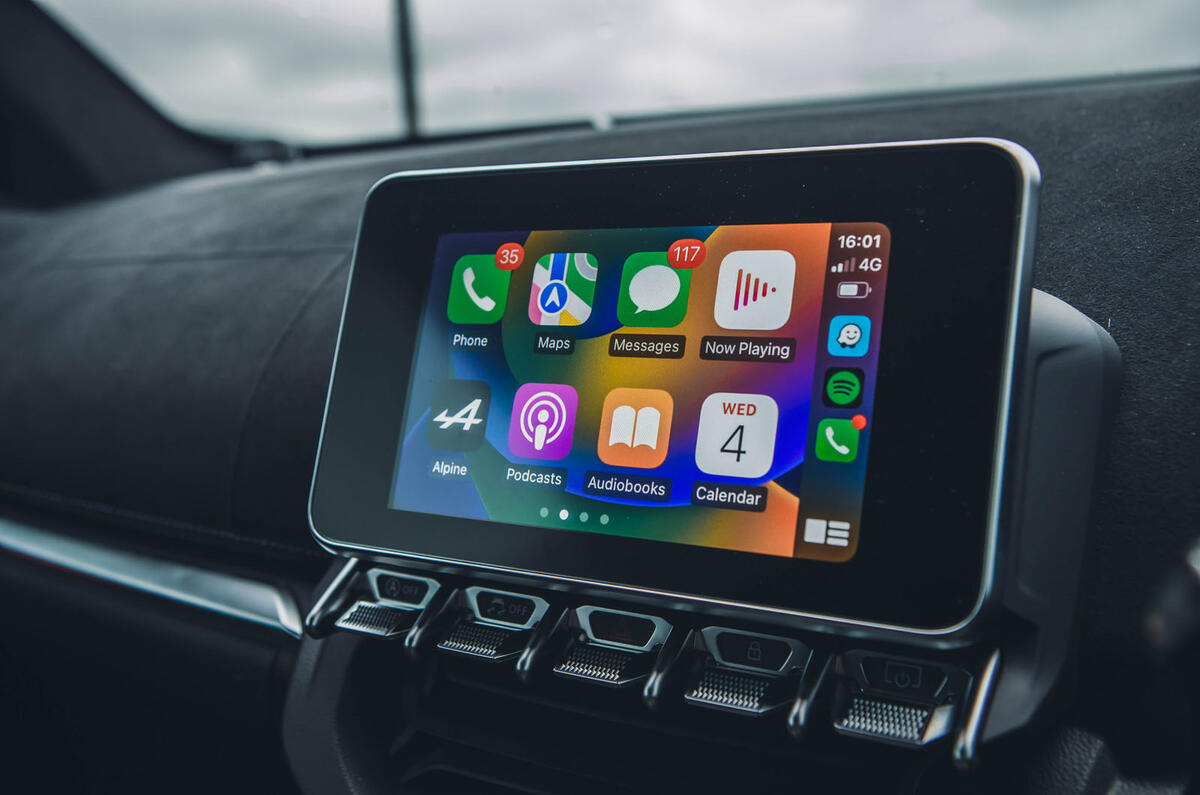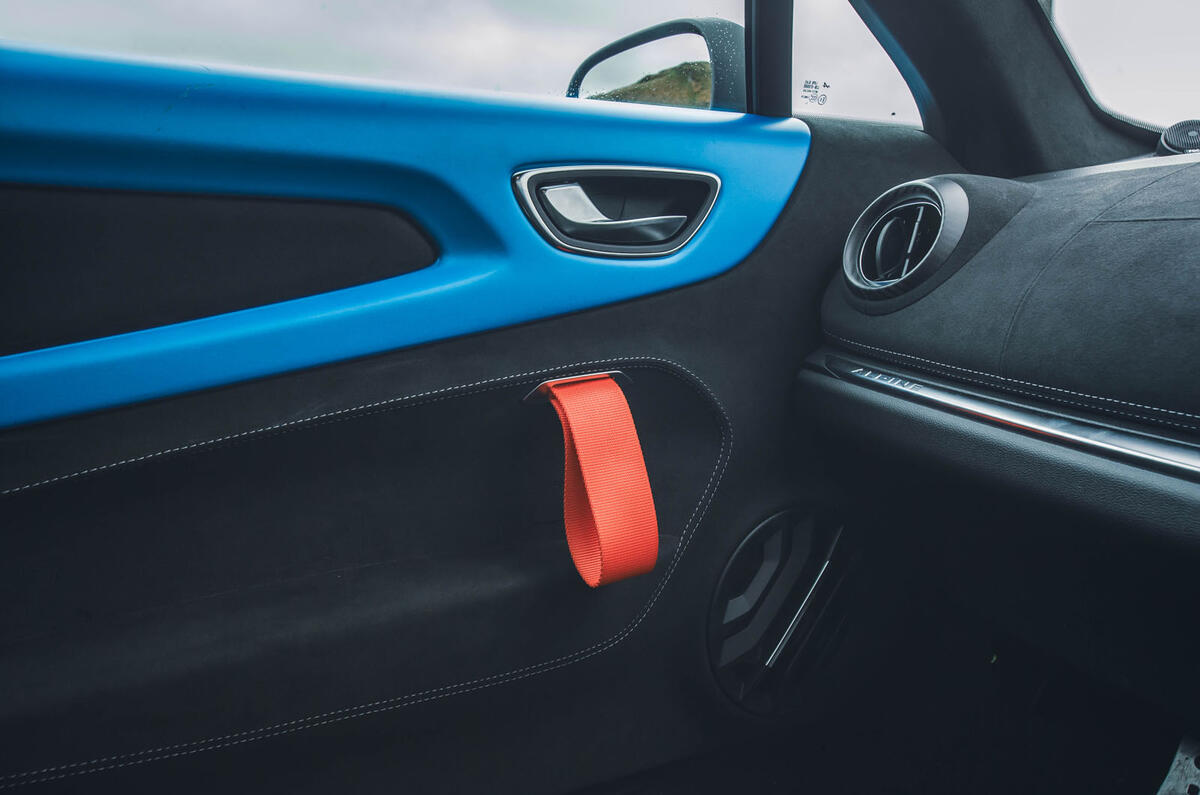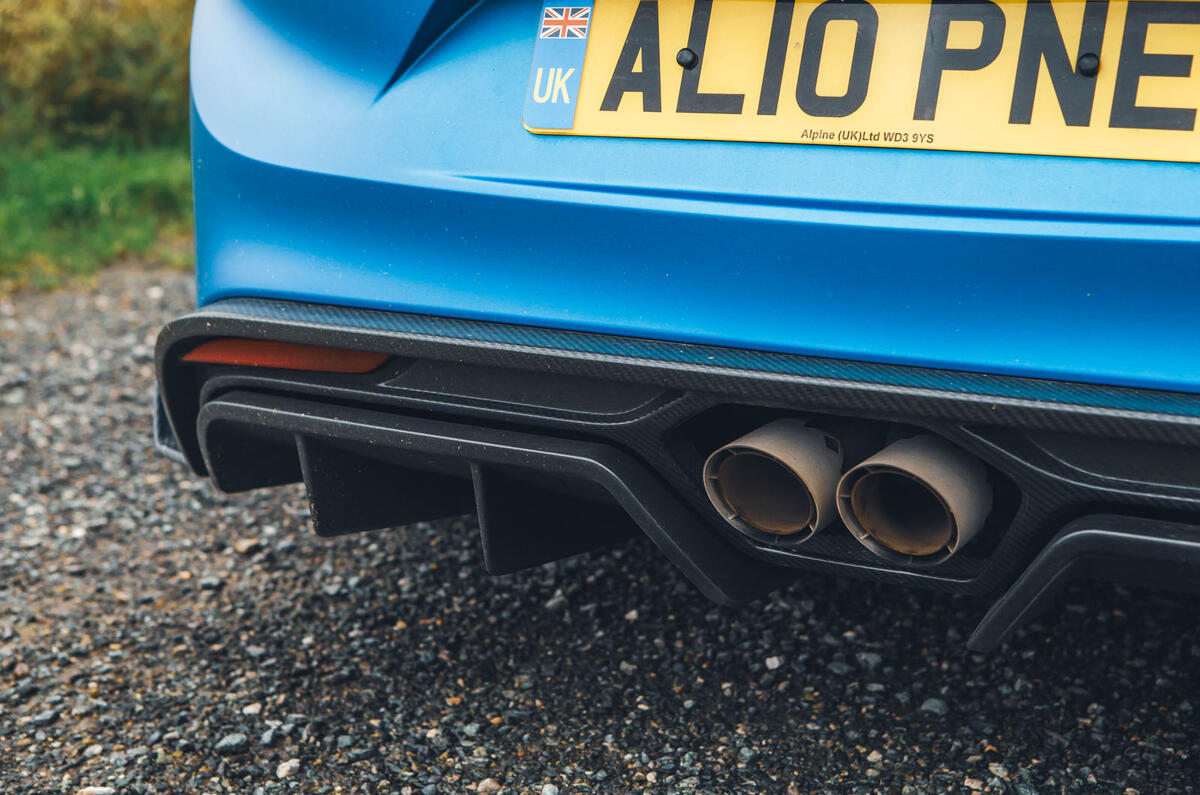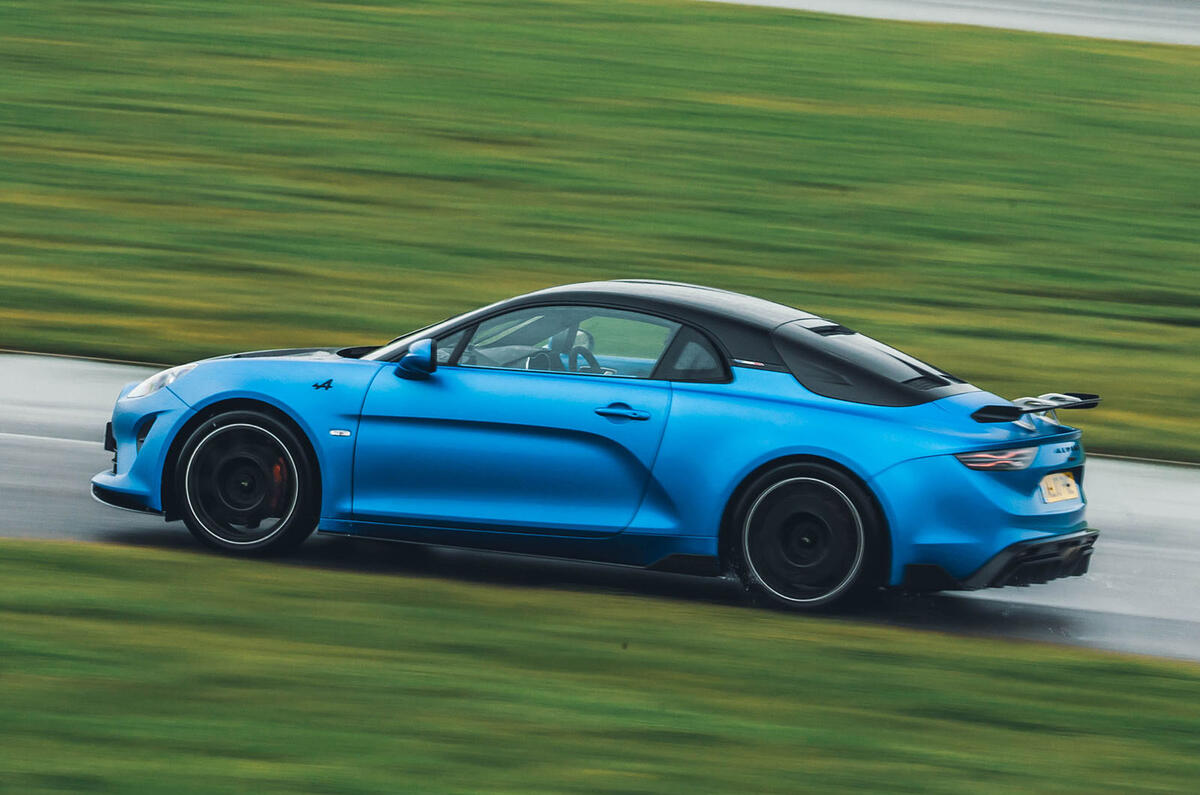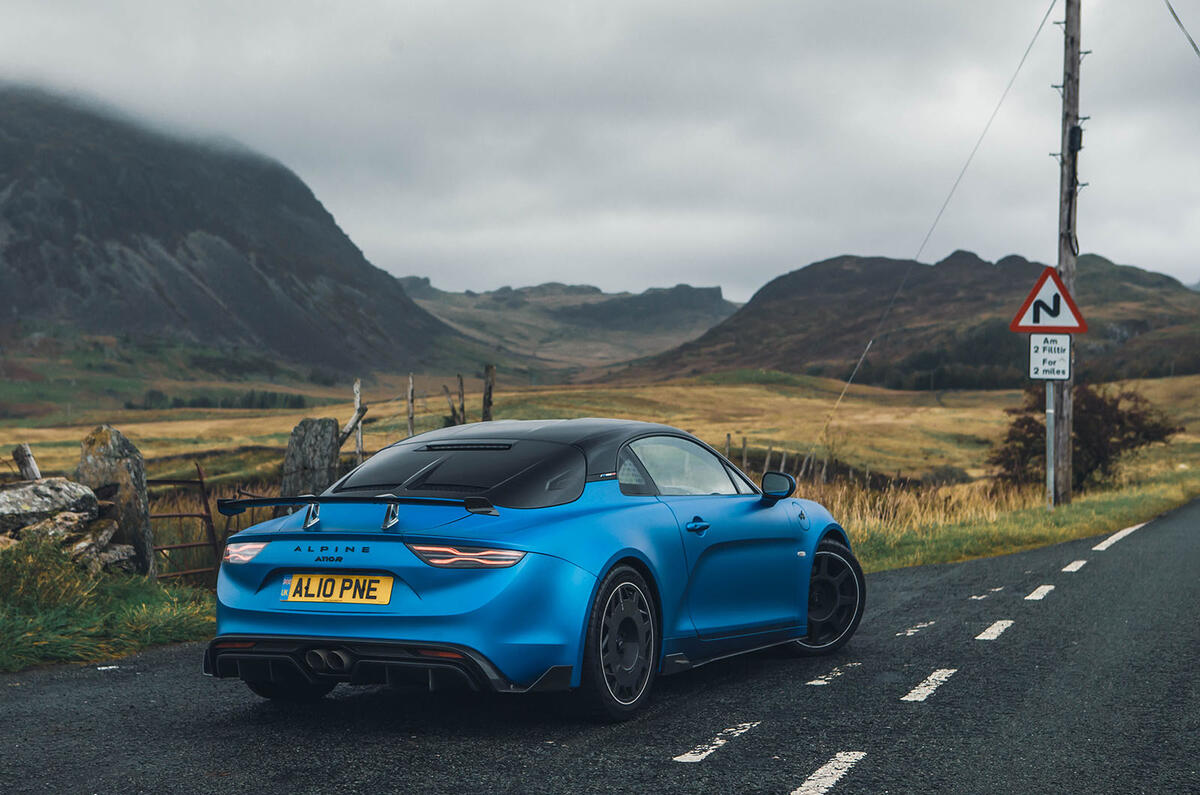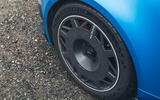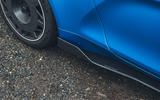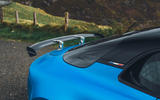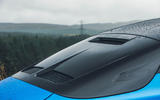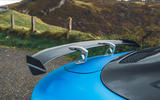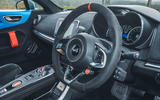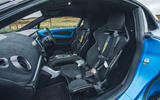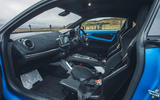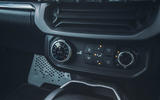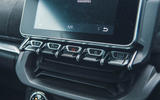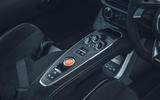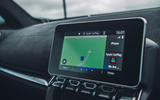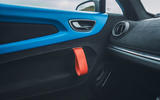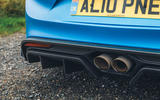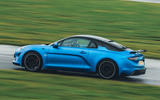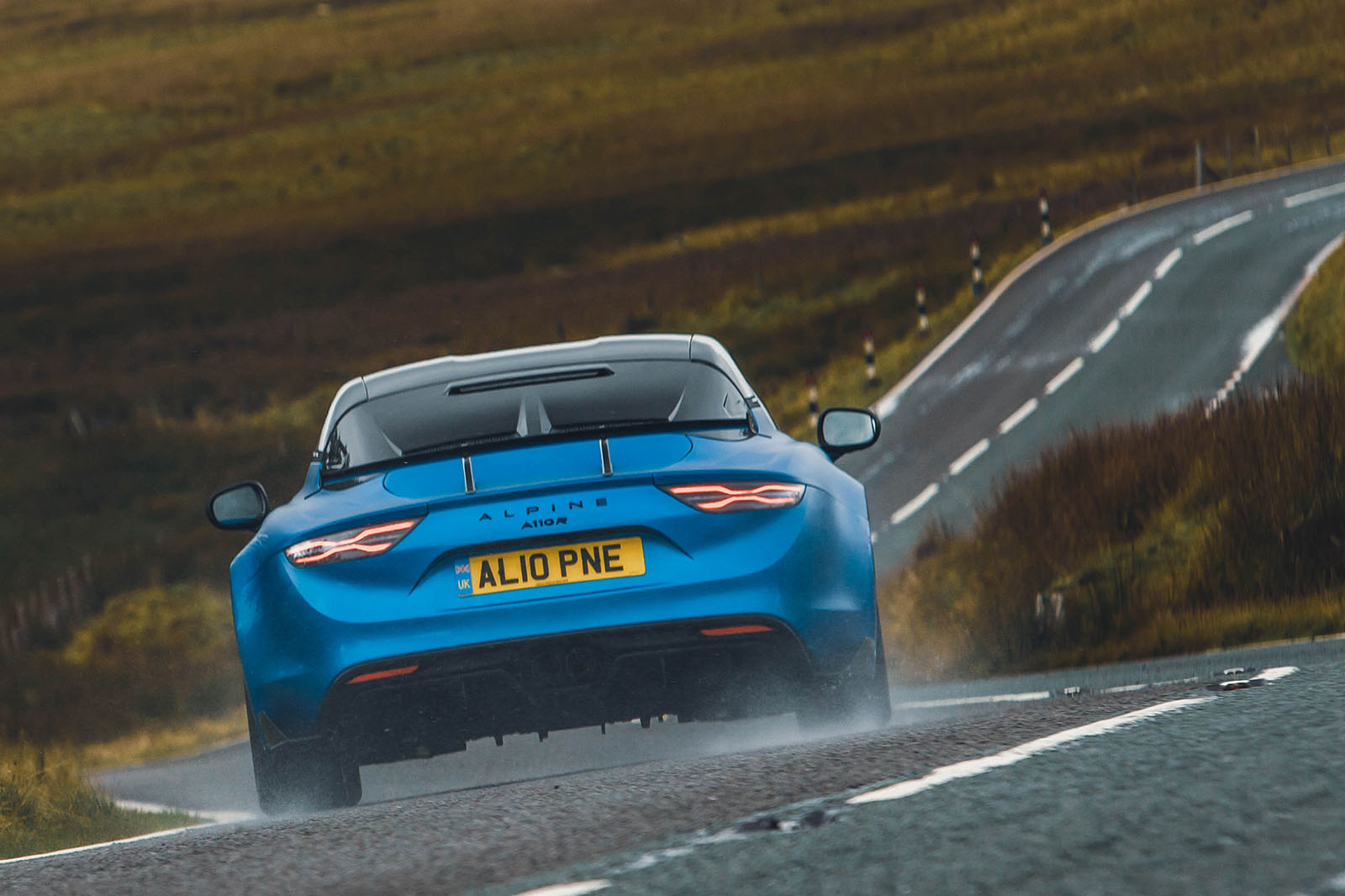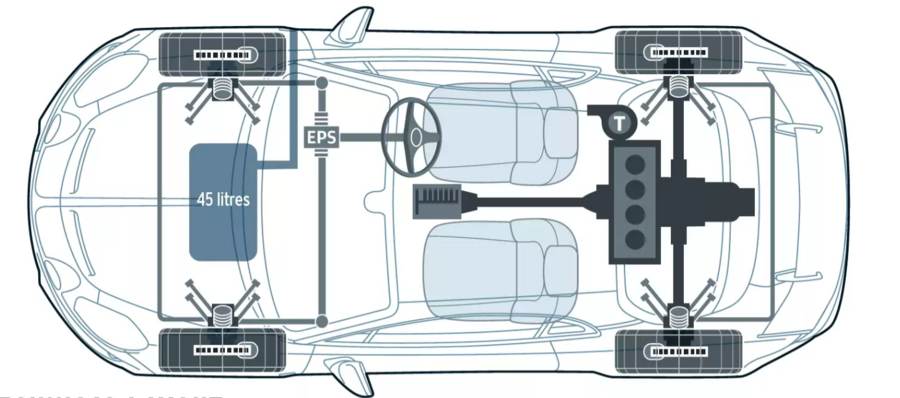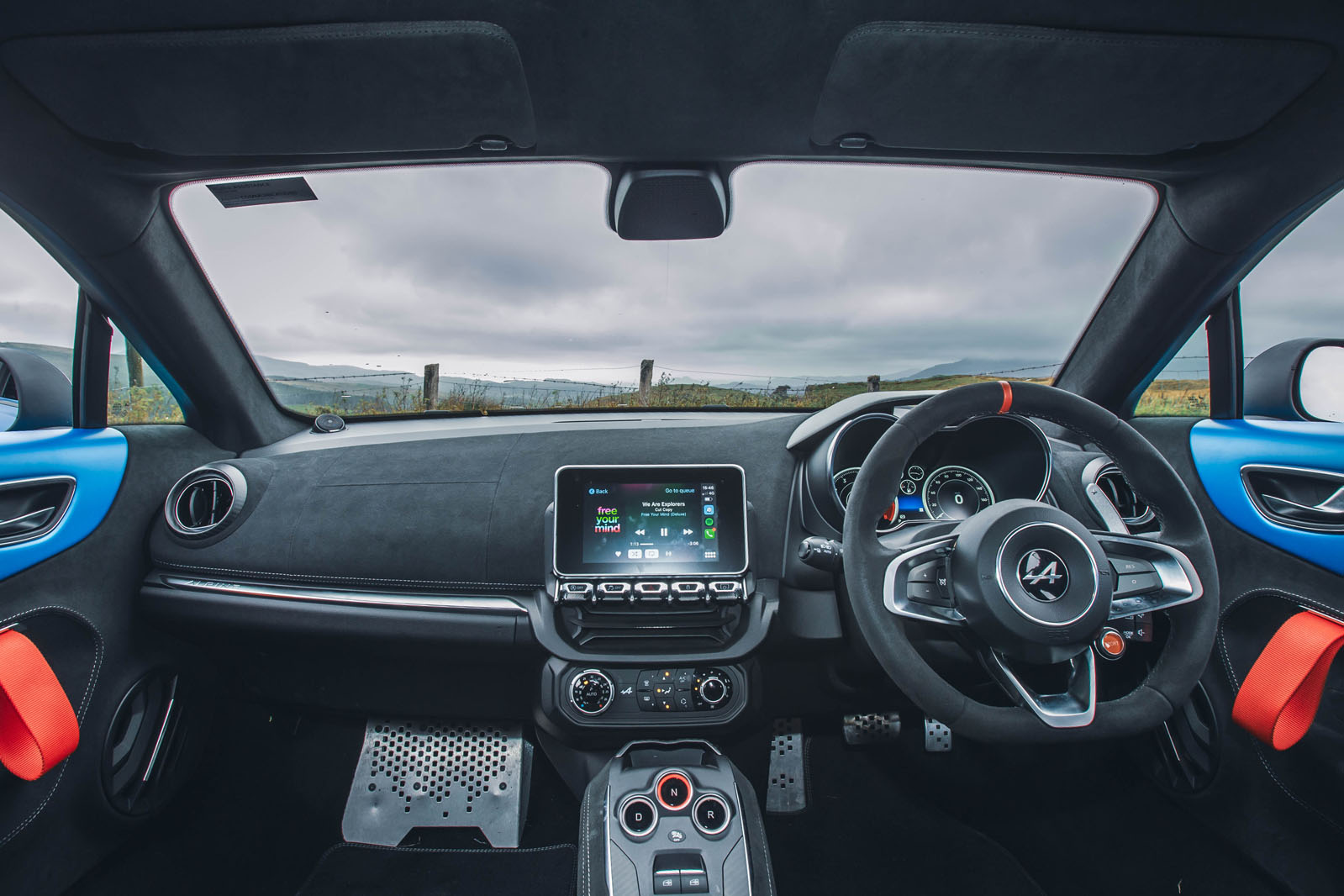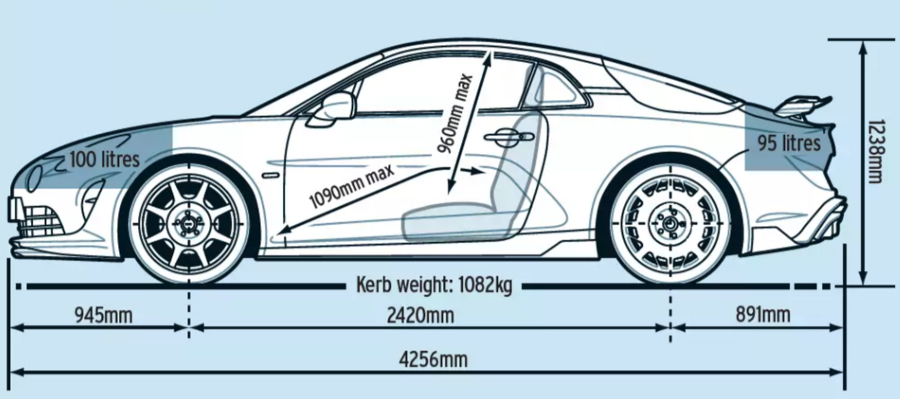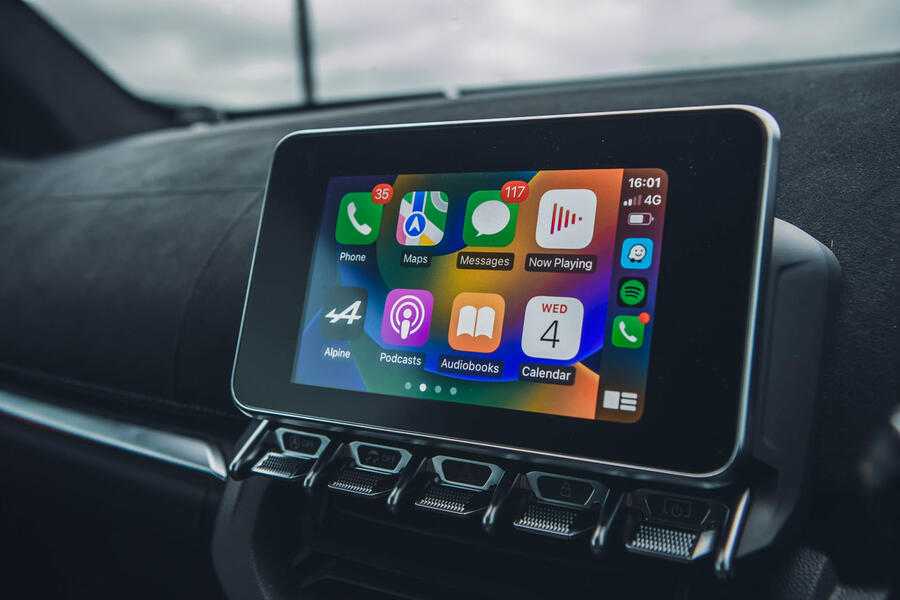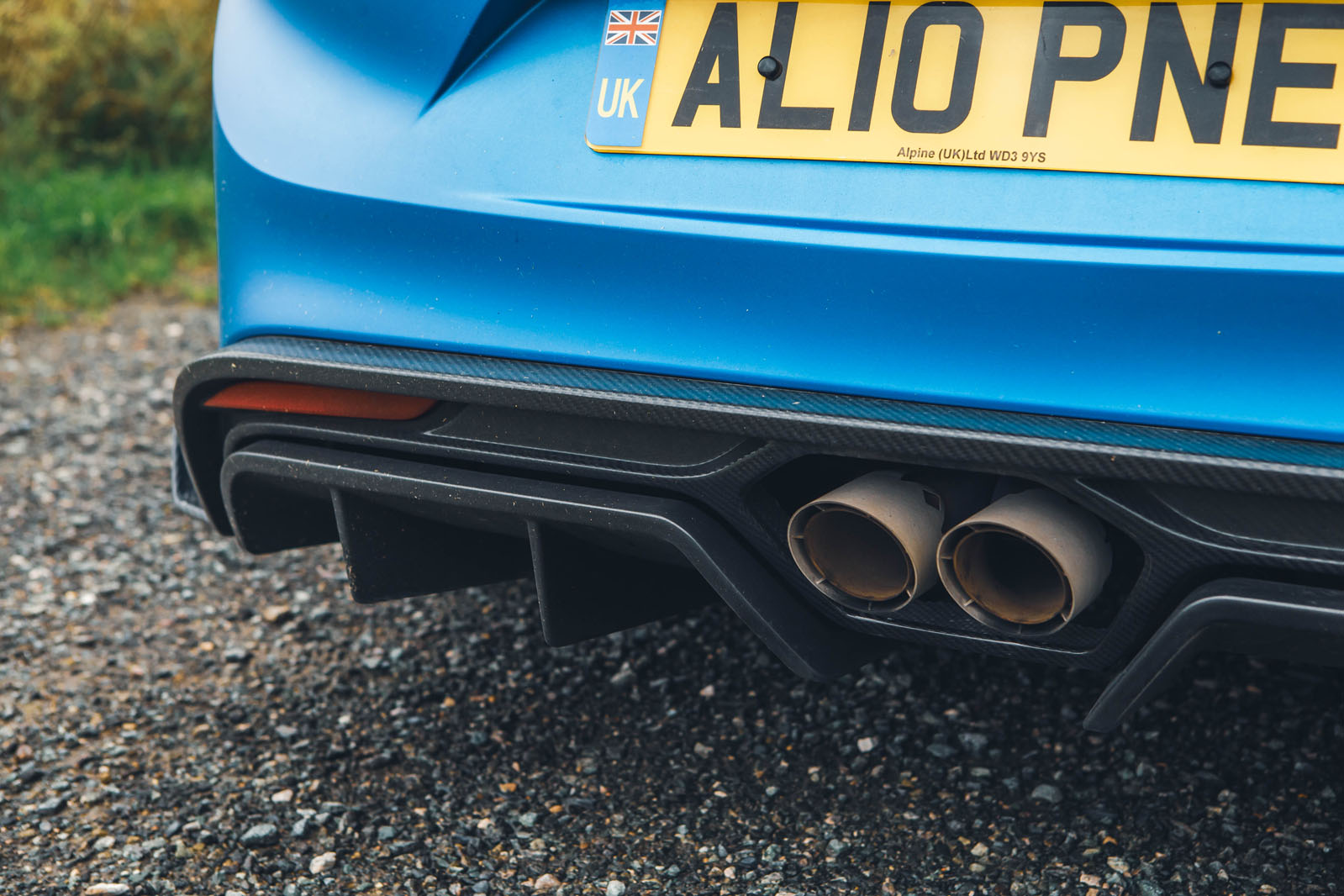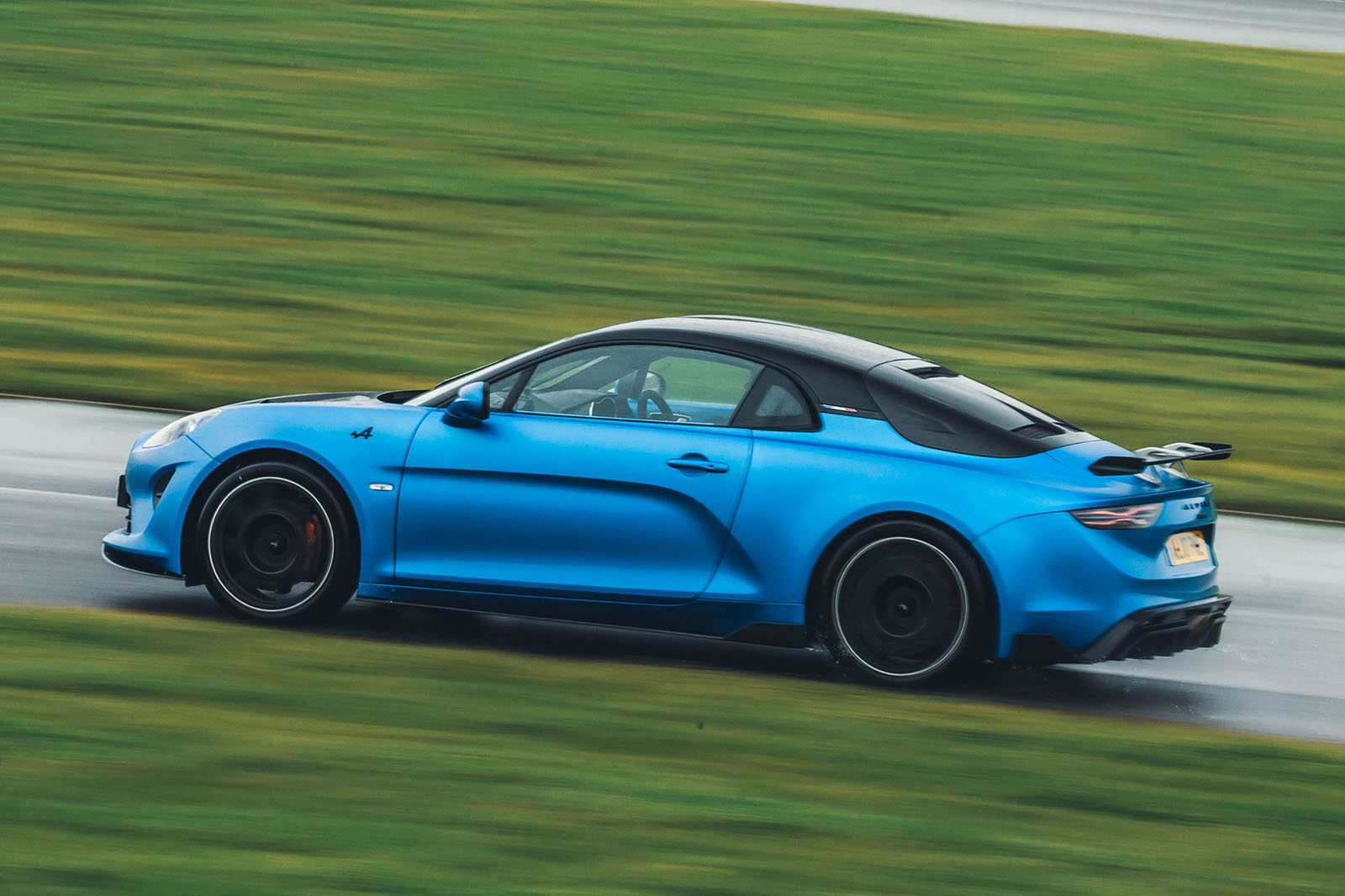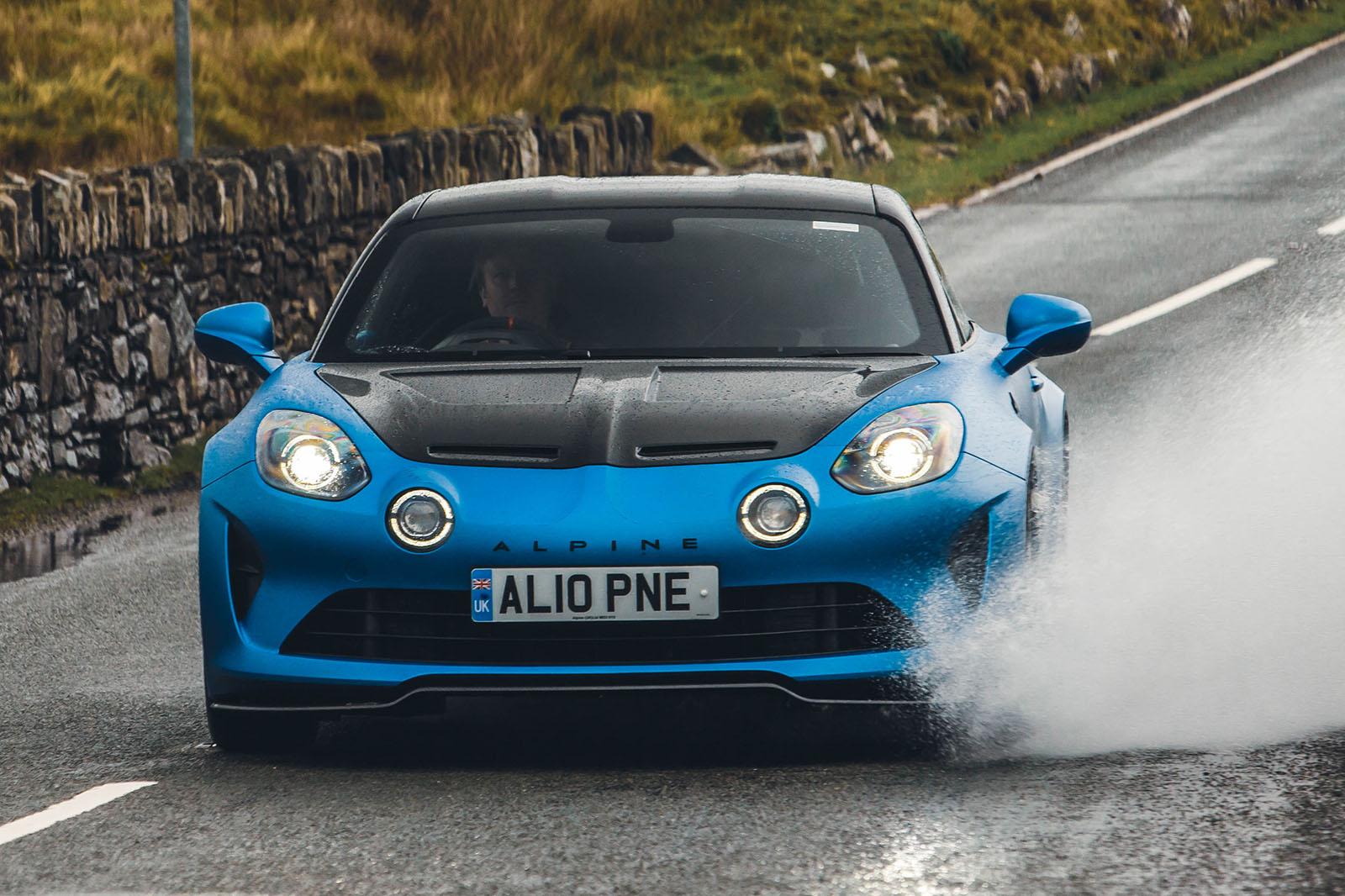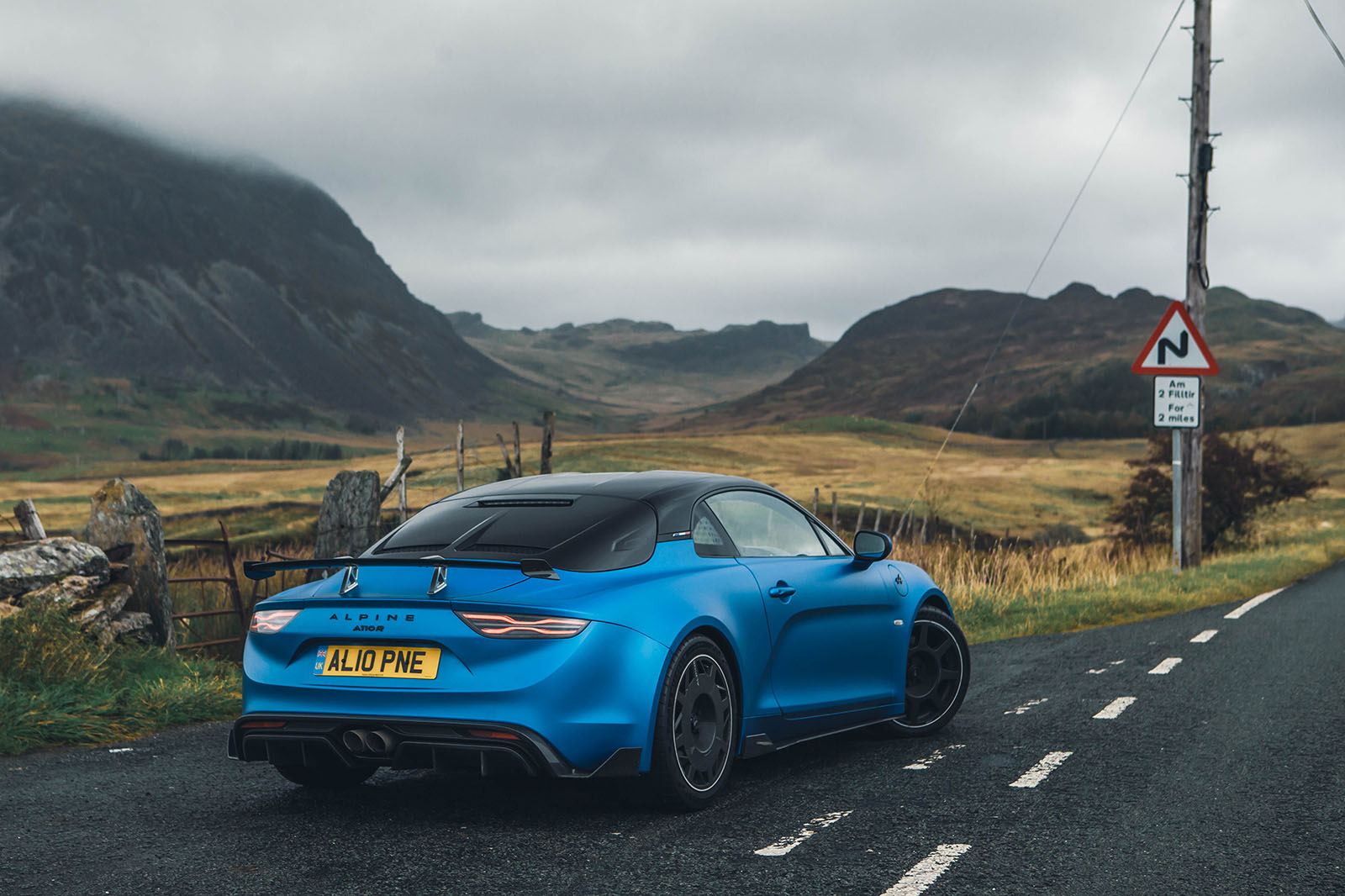Conditions were favourable on the day of our performance tests and, while the A110 R didn’t quite match its acceleration claims, it certainly went quicker than any other derivative we have timed previously.
Launch control is engaged in either Sport or Race driving mode. With electronic stability control set to ESC-Track, you simply hold the car on the brake pedal and give both shift paddles a long pull. The car governs its revs at about 3500rpm, feeding the clutch out quite progressively as you lift off the brake, and making for a getaway that feels brisk but not rapacious, and – thanks to those warm Michelin Pilot Sport Cup 2 tyres – is always delivered under control, with a surfeit of grip over grunt.
Averaged in two directions, our test car managed 60mph from rest in 4.2sec (half a second quicker than the A110 Première Edition we tested in 2018), and a standing quarter mile in 12.5sec (13.2sec for the standard car).

In broader terms, of course, that’s not particularly quick for a near-£100,000 sports car (BMW M4 Competition: 3.9sec, 12.1sec; Porsche Cayman GT4 RS: precisely the same). So the question you soon come to acquaint yourself with when driving the A110 R is: how much do I really want a lot of power in my track-ready sports car? How much do I need to accelerate really quickly, or to hear a really appealing, free-revving, multi-cylinder engine?
It isn’t that difficult to answer at least one of those questions, because the A110 R is certainly quick enough to get your pulse racing – on the road or on the track. It responds with a little bit of softness and latency when you apply power from middling revs, but then pulls cleanly and purposefully to well beyond 6000rpm.
So, for a four-cylinder turbo, this motor is strong enough, and it’s well matched to a dual-clutch gearbox of well-chosen ratios that shifts crisply in manual mode.
But, although Alpine has put in plenty of effort to better tune the R’s exhaust, intake resonator pipe and engine cover to give that engine a deeper, more dramatic audible character than it has elsewhere, it does lack some richness and distinguishing mechanical appeal, as well as really big-hitting firepower. For this price, other sports cars give you significantly more of both, leaving the A110 R’s chassis plenty of ground to make up.
Track Notes (Millbrook Proving Ground, Hill Route)
Alpine estimates that the Michelin Pilot Sport Cup 2 tyres on the A110 R are worth between one-half and a full second of lap time at most circuits, compared with the Pilot Sport 4s on an A110 S.
They certainly give the car a powerful hold on dry asphalt, and its tautly controlled body, stability-minded chassis tuning and huge stopping power give you huge confidence to go barrelling into braking zones, and to challenge yourself with how much speed you can carry from apex to apex.
You have to drive the car harder still to tease any adjustability at all from what is a pretty serious-feeling handling balance – and, for the most part, in vain.
The four-cylinder engine typically can’t overwhelm the driven axle’s grip level when accelerating out of tighter bends, and it takes a lot of corner-entry speed to start to move the rear of the car around on a trailing throttle.


